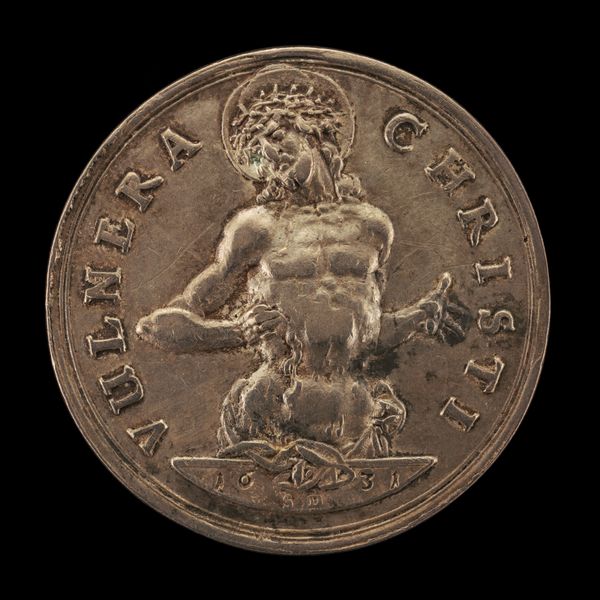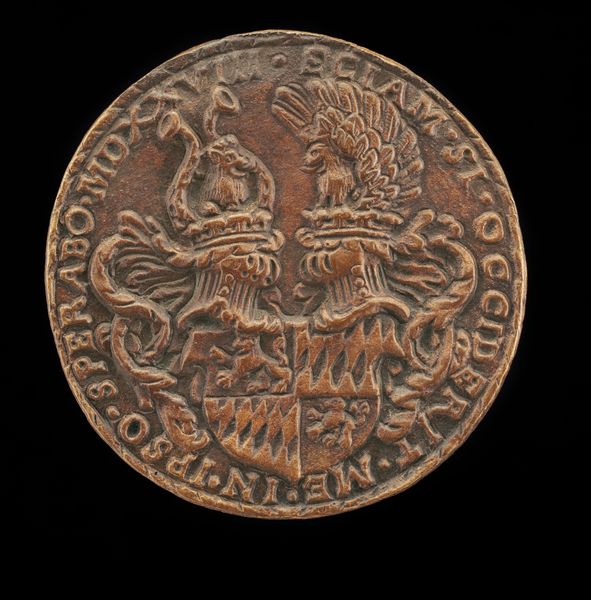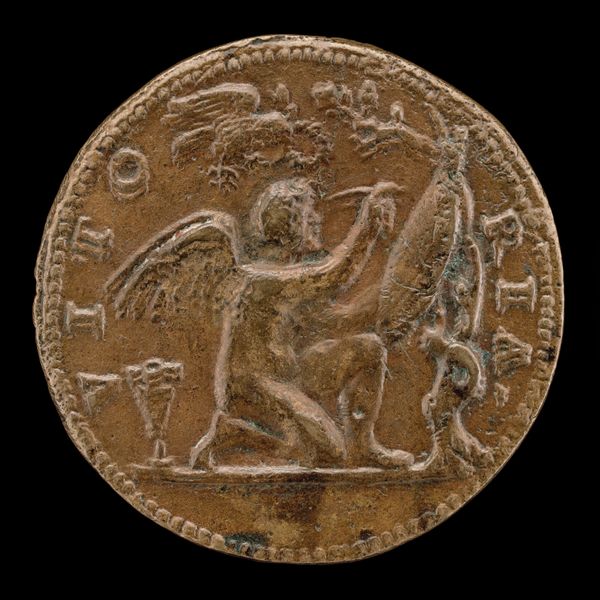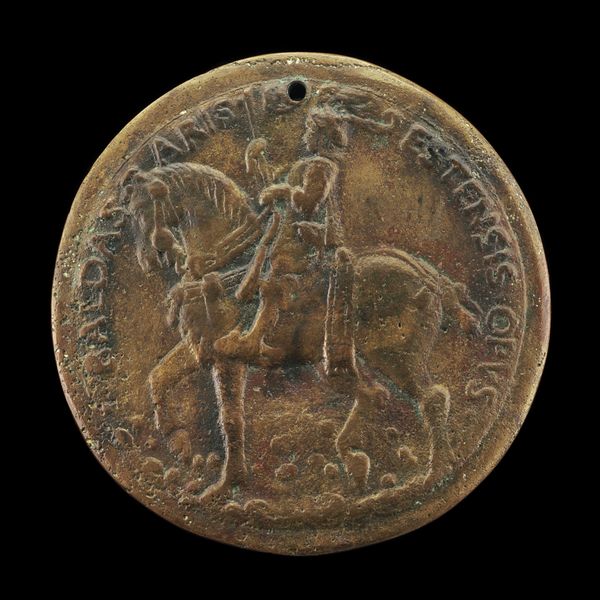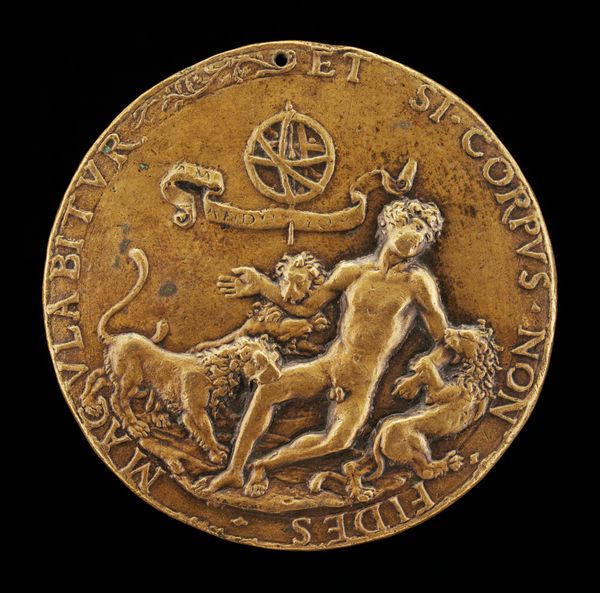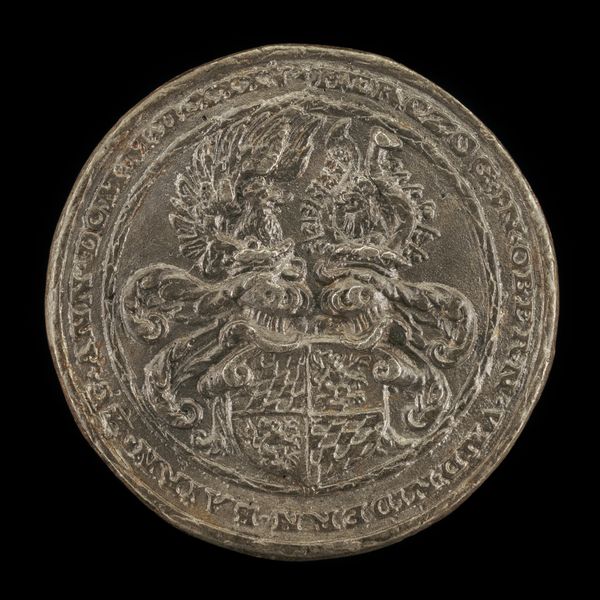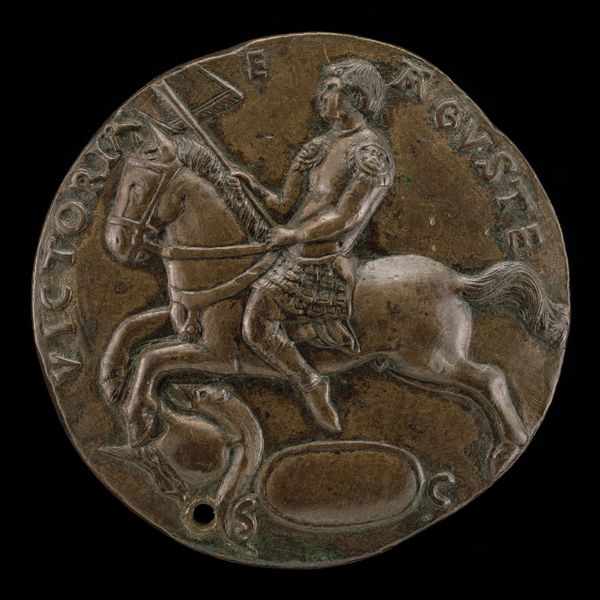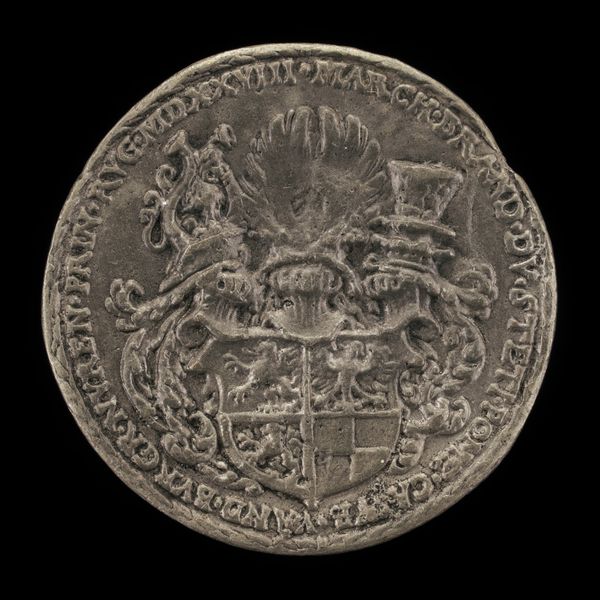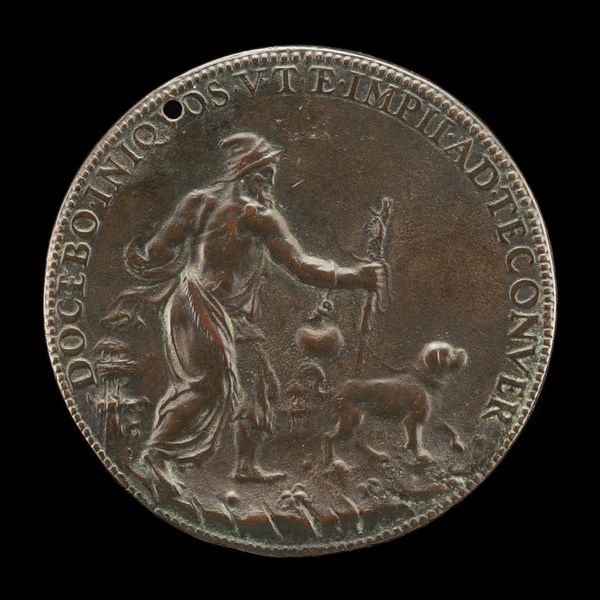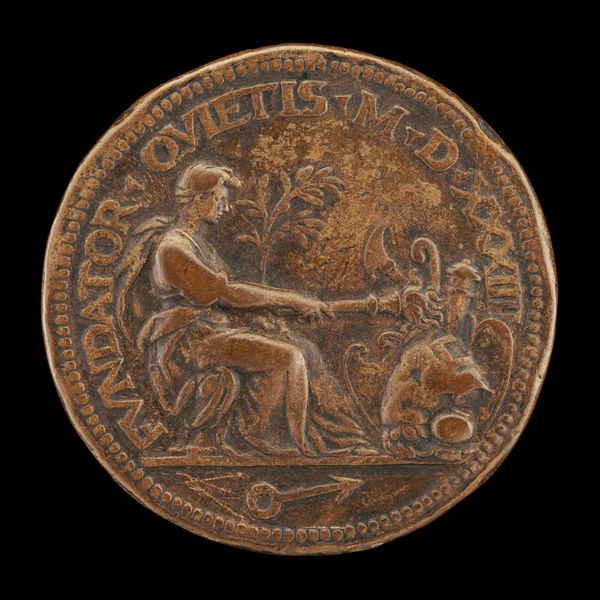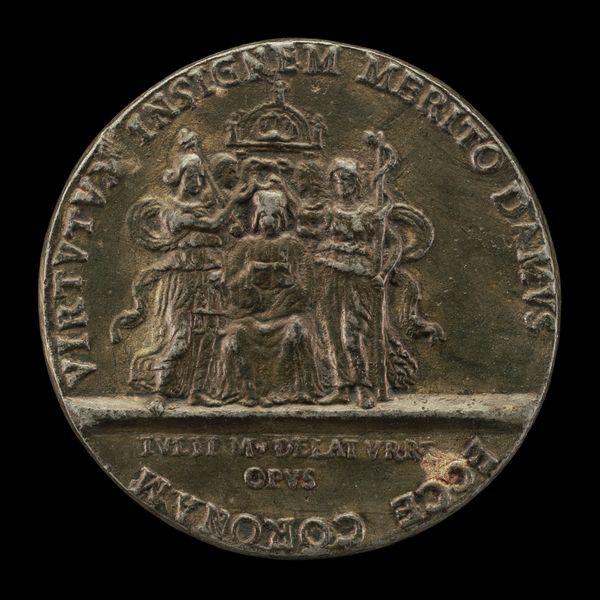![Neptune Seated on a Dolphin [reverse] by Giovanni Maria Pomedelli](/_next/image?url=https%3A%2F%2Fd2w8kbdekdi1gv.cloudfront.net%2FeyJidWNrZXQiOiAiYXJ0ZXJhLWltYWdlcy1idWNrZXQiLCAia2V5IjogImFydHdvcmtzL2JjMDEzOGUwLWI4ZDAtNDgzZC04MjlhLTUxNDg2NDgwNzQxNy9iYzAxMzhlMC1iOGQwLTQ4M2QtODI5YS01MTQ4NjQ4MDc0MTdfZnVsbC5qcGciLCAiZWRpdHMiOiB7InJlc2l6ZSI6IHsid2lkdGgiOiAxOTIwLCAiaGVpZ2h0IjogMTkyMCwgImZpdCI6ICJpbnNpZGUifX19&w=3840&q=75)
metal, bronze, sculpture
#
allegory
#
metal
#
sculpture
#
bronze
#
figuration
#
11_renaissance
#
sculpture
#
italian-renaissance
Dimensions: overall (diameter): 5.56 cm (2 3/16 in.) gross weight: 93.01 gr (0.205 lb.) axis: 12:00
Copyright: National Gallery of Art: CC0 1.0
Curator: Here we have "Neptune Seated on a Dolphin," a bronze sculpture crafted by Giovanni Maria Pomedelli in 1519, during the Italian Renaissance. It depicts the Roman god of the sea in striking detail. Editor: Immediately striking is the way the bronze seems almost alive. The muscular tension in Neptune’s body, the wildness of the dolphin, and the sharp details imply a complex process of sculpting and casting. It is as if the materiality wants to burst forth. Curator: It absolutely reflects the social context of its time, doesn’t it? Renaissance art often revisited classical mythology to explore contemporary notions of power and identity. The figure of Neptune, typically associated with dominion over the seas, takes on added layers of meaning through this revival. The male gaze is quite apparent in this portrayal. Editor: Right, and I wonder about the physical labor involved in crafting bronze works of this intricacy, considering 16th-century technologies. You get the impression there must have been multiple skilled hands involved, each contributing to a shared visual language of wealth and maritime ambition. Who were the workers, what were their daily conditions, and did that have bearing on the type of aesthetic product they constructed? Curator: That's an intriguing way to think about it! This medal also speaks volumes about the culture of the period. Consider the deliberate inclusion of text around the border. We see “IOANNES MARIA POMB .DELVS.VERONENSIS.F” along with the year "MDXIX", showcasing an emerging awareness of individual authorship, alongside civic pride tied to its city of origin, Verona. Editor: Absolutely, that textual framing turns it into more than just a pretty picture. Bronze as a medium allowed for the mass production of commemorative works; the artist's signature solidifying a new commodity form. This was circulated in the period and beyond. This artifact has been traveling the world due to its materiality. Curator: The allegorical weight this object once carried is really substantial. What might this emblem symbolize to us today? Editor: I guess thinking about its life beyond courts of power—the material survives. That kind of artistic legacy continues, prompting discussions about power, authorship, and of course the beauty, found in material creation.
Comments
No comments
Be the first to comment and join the conversation on the ultimate creative platform.
